 |
 |
 |
 |
 |
Type S or Type T |
There are two bsically different types of magic stars with 4 numbers in a row . |
Weakly and Almost |
Some stars are only weakly magic or are almost magic. |
Marián Trenkler of Safarik University, Kosice, Slovakia published a paper on Magic
Stars.
It is called "Magicke hviezdy" (Magic stars) and appeared in Obzory
matematiky, fyziky a informatiky, 51(1998), pages 1-7. (Obzory = horizons (or line of
sight) of mathematics, physics and informatics)
The following material is taken from this paper with his permission. Thanks Marian.
Magic stars with four numbers per line are designated as type S or type T.
Type S is indicated by Sn and has
all the numbers external to the pattern (what I call peaks and valleys).
My normal magic stars are all of this type.
Type T stars are so indicated with Tn (n in each case, is the order of the star). Type T stars have numbers on the peaks also, but instead of numbers in the valleys, they are at intersections in the interior of the pattern. There are type T magic stars for all orders greater then six. However, there will not be as many patterns (for a given order) as there are for type S stars. For example, order-7 has only 1 instead of 2 and order-12 has only 3 patterns for Type T but 4 patterns for type S.
Here is an order-6 Type S star (my index # 39) and an order-8 Type T star. The superscript 'M' indicates the star is magic.
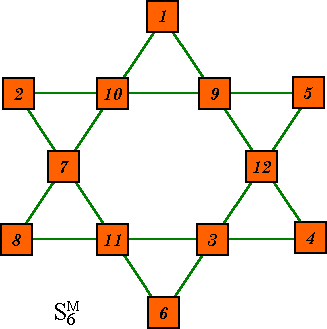 |
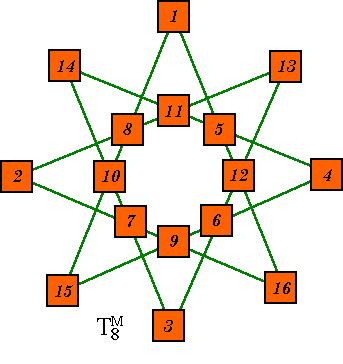 |
![]()
There exist stars of all orders greater then four that are almost magic or consist of non-consecutive numbers. They are defined thus. The superscript 'W' indicates the star is weakly magic, the superscript 'A' indicates almost-magic.
| Here are two order-5 stars. The first one is weakly-magic because all five lines sum to the same value, but the numbers used are not consecutive. The second star is almost-magic because, although it uses consecutive numbers, only three lines sum correctly to 22. One sums to 21 and one sums to 23 |
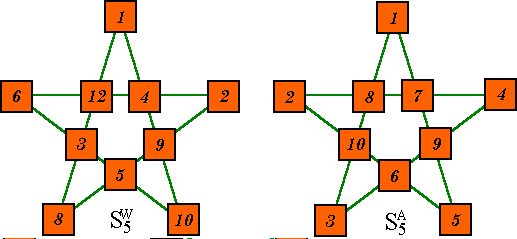 |
![]()
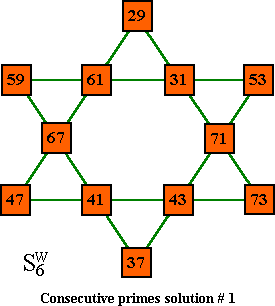 |
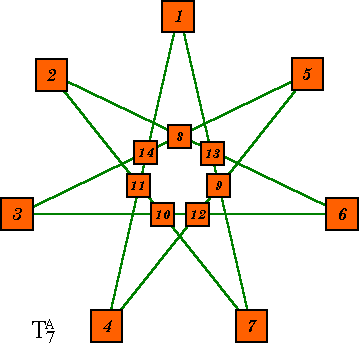 |
| Weakly-magic Stars have all lines summing to the same value, but consist of numbers that are not in consecutive order. All order-5 magic stars are of this type. Prime number magic stars are also of this type. | Almost magic stars use
consecutive numbers but have n – 2 lines summing to 4n + 2, and the
other two sum to 4n + 1 and 4n + 3. If we attempt to construct an order-5
magic star with numbers 1 to 10, this is the best we can do. This order-7 star has 5 lines summing to 30, 1 line sums to 29 and 1 line sums to 31 |
![]()
Footnote: Charles W. Trigg, Journal of Recreational Mathematics 29:1, 1998, p 8-11 uses the same term (almost magic) but applies it only to pentagrams (order-5 stars). Also, his definition has 4 lines summing correctly.
Go to Order-5 Magic Stars for more information.
![]()
. Please send me Feedback
about my Web site!
Please send me Feedback
about my Web site!![]()

![]()
![]()
Harvey Heinz harveyheinz@shaw.ca
Last updated March 01, 2005
Copyright © 1999 by Harvey D. Heinz